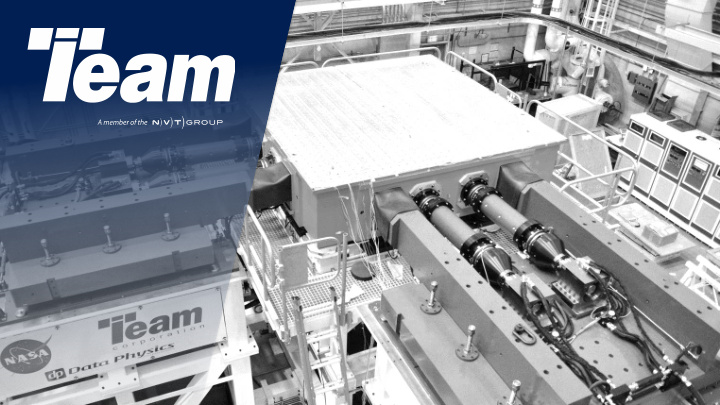



AGENDA Discussion topics: Why M-DoF? - Replicating real-world excitations in - Test Method Comparison the lab helps identify potentially new - System Design failure modes - CUBE System - Can be a more accurate - TENSOR System representation for drive input - Method of Control - Higher fidelity testing leads to better product design and ultimately results in savings (cost, weight, etc.)
TEST METHOD COMPARISON - Simplest form of testing is 1-DoF - M-DoF is now more common - Realistic field representation - Accelerated testing while maintaining fidelity - M-DoF testing simultaneously leads to additional failure modes not captured in 1-DoF
TEST METHOD VISUAL: SETUP
TEST METHOD VISUAL
TEST METHOD VISUAL
MULTI AXIS SYSTEM DESIGN - Multiple axes requires interconnection of many moving parts - Kinematics are an important consideration - Swivel-ends are low-cost solution - Hydrostatic couplings offer high transmissibility - High frequency requires stiffness
MULTI AXIS SYSTEM DESIGN
CUBE TEST SYSTEM - CUBE is an integrated 6-DoF system - Six double-ended, integrated actuators - Hydrostatically supported table structure allows for 500 Hz response
TEST METHOD VISUAL - 6-DoF system with tall payload running M-DoF random test - Payload shifting around - Road data simulating back of truck on a double-stack pallet load
TENSOR TEST SYSTEM - TENSOR is designed with ED shakers for a 2,000 Hz bandwidth - Twelve oil-guided and oil-cooled ED shakers with integrated Pads - Exceptional control over table - Enhanced possibilities for multi- axis control
CONTROL POSSIBILITIES - Over-constrained design relies heavily on the test controller - Improves control by maximizing connection to table structure - Ability to control modeshapes in table using Matrix test controller
Recommend
More recommend